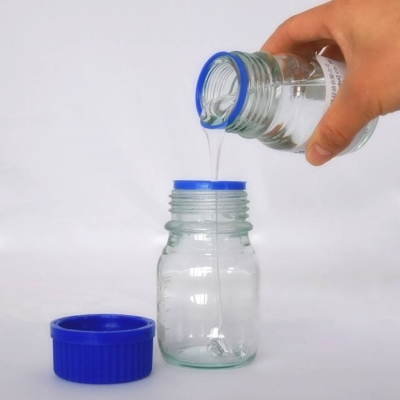-
Categories
-
Pharmaceutical Intermediates
-
Active Pharmaceutical Ingredients
-
Food Additives
- Industrial Coatings
- Agrochemicals
- Dyes and Pigments
- Surfactant
- Flavors and Fragrances
- Chemical Reagents
- Catalyst and Auxiliary
- Natural Products
- Inorganic Chemistry
-
Organic Chemistry
-
Biochemical Engineering
- Analytical Chemistry
- Cosmetic Ingredient
-
Pharmaceutical Intermediates
Promotion
ECHEMI Mall
Wholesale
Weekly Price
Exhibition
News
-
Trade Service
According to Japanese media reports, technology to increase battery capacity to 4~5 times by using sulfur in the electrodes of lithium-ion batteries is being developed
one after another.
If this technology can be applied to lithium-ion batteries, it is expected to significantly reduce the frequency of charging portable terminals such as smartphones
.
The plan is to join hands with battery companies and strive to promote practical
use in 3~5 years.
Lithium batteries are repeatedly charged and discharged
by lithium ions moving back and forth between the positive and negative electrodes through the electrolyte.
The cathode is made of lithium cobalt oxide, including rare metals
.
Sulfur has the property of storing a large amount of electricity and is suitable as an electrode material
.
At the same time, it is not a rare resource
.
Research is underway
to process sulfur into microparticles and use it for cathodes based on increasing surface area.
In addition, Professor Shoji Ishikawa of Kansai University in Japan has developed a technology that penetrates sulfur particles into nanopores with diameters of several nanometers opened on the carbon used for electrodes
.
Uniformly sized pores are made into microparticles that are easy to fix, and sulfur is efficiently filled into the
holes.
About 30% of the weight of the electrode made by this method is sulfur, and the battery capacity is four times
that of the previous one.
Professor Ishikawa et al.
made a positive electrode and tested the battery
.
Performance is maintained even after repeated hundreds of charge and discharge
.
The charging time is reduced to one-twentieth
of that of conventional lithium-ion batteries.
In the future, the company will increase the amount of sulfur that penetrates into the carbon, aiming to make it practical in
five years.
According to Japanese media reports, technology to increase battery capacity to 4~5 times by using sulfur in the electrodes of lithium-ion batteries is being developed
one after another.
If this technology can be applied to lithium-ion batteries, it is expected to significantly reduce the frequency of charging portable terminals such as smartphones
.
The plan is to join hands with battery companies and strive to promote practical
use in 3~5 years.
Lithium batteries are repeatedly charged and discharged
by lithium ions moving back and forth between the positive and negative electrodes through the electrolyte.
The cathode is made of lithium cobalt oxide, including rare metals
.
Sulfur has the property of storing a large amount of electricity and is suitable as an electrode material
.
At the same time, it is not a rare resource
.
Research is underway
to process sulfur into microparticles and use it for cathodes based on increasing surface area.
In addition, Professor Shoji Ishikawa of Kansai University in Japan has developed a technology that penetrates sulfur particles into nanopores with diameters of several nanometers opened on the carbon used for electrodes
.
Uniformly sized pores are made into microparticles that are easy to fix, and sulfur is efficiently filled into the
holes.
About 30% of the weight of the electrode made by this method is sulfur, and the battery capacity is four times
that of the previous one.
Professor Ishikawa et al.
made a positive electrode and tested the battery
.
Performance is maintained even after repeated hundreds of charge and discharge
.
The charging time is reduced to one-twentieth
of that of conventional lithium-ion batteries.
In the future, the company will increase the amount of sulfur that penetrates into the carbon, aiming to make it practical in
five years.







